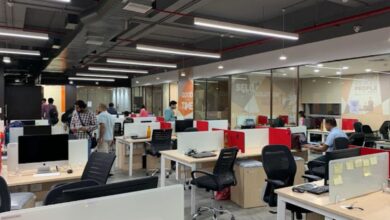Xiaomi India COO on ‘pragmatic approach to 5G’, price hike for Redmi Note 11 phones

A “pragmatic approach to 5G” is how Muralikrishnan B, Chief Operating Officer at Xiaomi India, explains the company’s current Redmi Note portfolio, which has only two 5G-ready variants right now. While this might mean that Redmi is behind some rivals–many of whom are introducing a 5G phone at every possible price point–Xiaomi has good reason for balancing 4G and 5G phones in their portfolio.
“If you look at Ericsson’s report on 5G adoption, five years from now, 55 per cent of the subscriber base will be 5G subscribers and a whopping 39 per cent will be 4G. What this tells us is somewhere you need to have a pragmatic approach to 4G versus 5G,” he told at the sidelines of the Redmi Note 11 Pro launch in Bengaluru.
He further pointed out data that even in countries where 5G has rolled out, the subscriber base remains low for the next-generation of mobile internet technology. “If you were to take the example of the US, almost two thirds or 63 per cent of the shipments are 5G, but only 20 per cent of the subscriber base is 5G. In China, 75 per cent of shipments are 5G and about 35 per cent are 5G subscribers,” the Xiaomi COO said.
But he also admitted that “there is overwhelming data to indicate that a majority of the customers want a 5G device because they want to make it future proof.”
Regarding the increased pricing for Redmi Note 11 series — the Redmi Note 11 Pro+ starts at Rs 20,999, making it one of the most expensive ever– Muralikrishnan stressed that there were several reasons for this. “When it comes to pricing, the one undisputed trend that we’re seeing across the market is an overall increase in ASPs (average selling price). In fact, the segments above Rs 20,000 are growing at breakneck speed, close to 100 per cent year-over-year. People are choosing to upgrade to much more full-featured, almost flagship-level phones,” he pointed out, and better specifications would mean higher prices.
He also added that other changes have necessitated the price going up, such as the GST hike (from 12 to 18 per cent in April 2020), along with rising component prices and an overall increase in shipping costs.
Regarding the supply chain issues, he called it a perfect storm thanks to Covid and related manpower problems, adding that “the entire 4G to 5G transition,” also made it worse. “Because chip manufacturers allocated more capacity to 5G, 4G supply also took a beating,” he explained. However, the Xiaomi COO said he was more optimic in 2022 regarding these issues, and they were seeing positive signals coming from March 2022.





